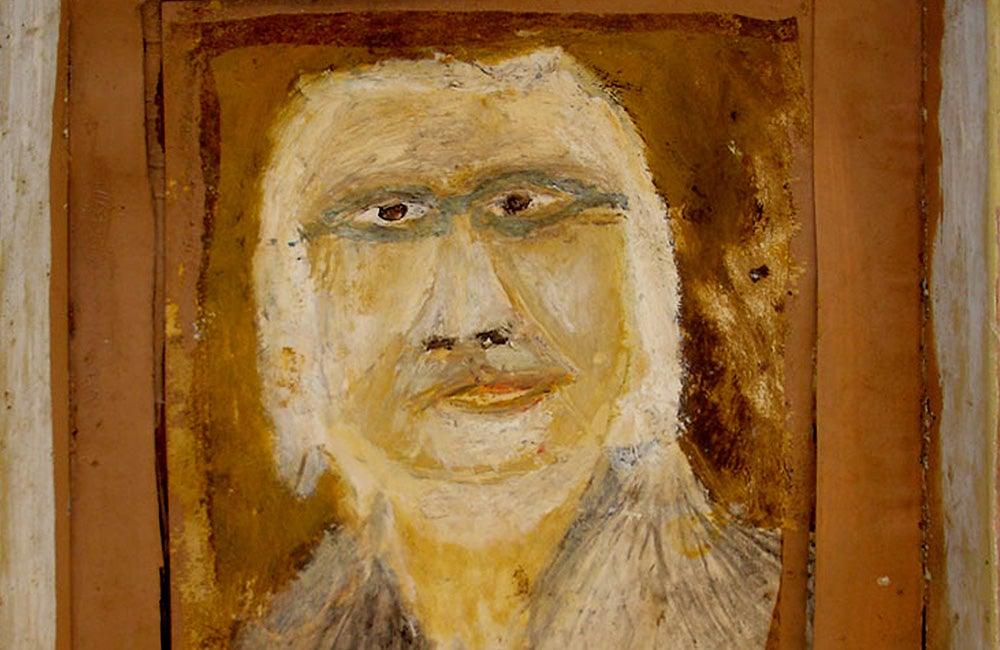First published: Fall 2015
Selby Warren (1887–1979) lived much of his 92 years in the tiny settlement of Trunkey Creek, rural New South Wales, Australia. His paintings reflect a “time past”, when country life was basic and tough. Warren painted simply because he wanted to and, until he gained recognition towards the end of his life, he never attempted to sell a picture, keeping his art to himself. From an art-world perspective, Warren seemed to appear fully formed as an artist – having no training, apprenticeship, career development, and being without teachers, artist-peers and dealers. It was as though a bird had flown over the rugged terrain and dropped a seed, from which a single flower had sprouted, growing alone in an otherwise barren landscape. Warren painted in a male-dominated and unsophisticated bush town where art-making of any kind just “wasn’t the sort of thing blokes did”. His family’s reaction to his art was that of bemusement; the locals were dismissive.
 Piebald Pony, 1967, acrylic and housepaint on paper, 23 x 13 ins. / 58 x 34 cm
Piebald Pony, 1967, acrylic and housepaint on paper, 23 x 13 ins. / 58 x 34 cm
Warren lived at Hill 90, along the road from the Black Stump Hotel, the focal point of Trunkey Creek. And it was there, in June 1971, that Warren was discovered by Garth Dixon, an art lecturer from a college in the nearby town of Bathurst. Dixon had stopped at the Black Stump Hotel on his way home from a fishing trip and, behind some old bottles on a shelf, noticed the corner of a painting and asked the publican if he could look at the whole picture. Liking what he saw, he asked about the artist and was told by the publican, “It was done by a silly old bugger who lives halfway up the hill.”
Dixon decided to visit the artist and was met by a elderly, snowy-haired man with a harelip. Warren guardedly welcomed the stranger into the house. Alma, Warren’s wife, remained a quiet observer in the background. Dixon was overwhelmed by the colourful spectacle of paintings inside that plastered the house from floor to ceiling. He recognised that this work needed to be exposed to a wide public. He sent some photographs of the paintings to Rudy Komon, Sydney’s most respected art dealer at the time, who quickly visited the 84-year-old artist and arranged for an exhibition to be held at his Sydney gallery. The exhibition, in February 1972, was a marked success: most of the works were sold, and Warren received considerable media attention. Komon organised two more exhibitions, in Melbourne and Brisbane. Warren was suddenly popular in the art scene, but his period of celebrity was brief, and by 1974 the interest had waned. Until a retrospective at the Bathurst Regional Gallery in February 2014, he had been all but forgotten by the public and the art world alike.
Undeterred by the drop in interest, Warren set up his own gallery in a rough tin-shed on Trunkey Creek’s main street.
This is an article extract; read the full article in Raw Vision #87




